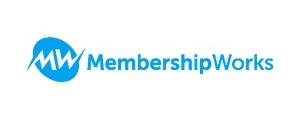 Special to the Philanthropy Journal
Special to the Philanthropy Journal
By Amy Hufford
What happens when it’s time for an association to redesign their website? Because staff is spread thin and web design is not often an in-house skill set, one staff member is tasked to write an RFP and evaluate developer, web designer or agency proposals. The winning contractor is usually selected because of a good looking portfolio and technical knowledge. Most providers will not be specialists in designing for associations. To ensure that your association website is not only beautiful, but also member-focused, keep these common mistakes in mind.
 Bulky membership join page
Bulky membership join page
Your member sign up page is likely one of the biggest income-producing pages. Tips for winning:
- Make it as clear and clutter-free as possible. Save lengthy explanatory text for another page.
- Offering too many choices in the process leads to indecision. Minimize the number of membership levels and payment types.
- The higher the number of empty fields, the less likely potential members will be to convert. Challenge yourself to eliminate “nice to have” fields on the first page of the process. Ask for additional information after payment. See additional tips related to conversions and form length.
Leave out these fields:- Second phone number
- Confirm Email
- Salutation/Title
- Fax number
Some pages are not selling
Designers tend to put a lot of effort into making the home page a work of art. But a home page won’t generate income. Search engines will often list pages deeper in the site instead of a home page for non-brand search terms. Given that any page can be the first page a prospect sees:
- Put more design effort into your top landing pages. Google Analytics can identify these. Google considers landing pages as the first page viewed in a session.
- Ensure the top navigation makes it easy to find the member join page. Don’t bury it in subnavigation. Also use sidebars or house ads to direct prospects to the signup page.
- Consider having a site-wide newsletter signup popup or a signup form in the footer so that you can begin to court prospects who come to your site. If you use a popup, adjust the settings to make sure it is not shown again to people who have already closed it once or filled it out.
- Every page doesn’t need a call to action, but it’s not a bad idea to consider whether or not each page may lend itself to having one or if the page could be useful in some part of the sales process.
Retention emails use default text
While your membership management software may provide default messages, customizing the content of automated emails will help your association convert these failed and past due payments to renewals. To break through inbox clutter, be sure to set up at least two reminders to send after the first past due or failed payment message. Think about including:
- Reminders of member benefits (link to a member benefits page).
- Staff contact information for members who are having trouble or have questions.
- The member or business name. The open rate for personalized emails was 18.8%, as compared to 13.1% without personalization. Embed a name in the greeting (e.g. “Dear [contact]”) or even better, the subject line (e.g. “[contact] we need your help”).
- The last four digits of the credit card on file so that the member can see if the card is one that is.
- A link directly to a login page to make a membership payment so members don’t accidentally try to join again.
- See a sample membership renewal letter for further ideas.
Lack of member segmentation
The organization’s membership software likely has a number of ways to group members. Associations need to know demographics like job titles and business types. Set up ways for members to classify themselves – allow them to self-select labels or choose from drop down options. Standardizing the choices will be more useful than information that’s entered into a text field. Use this data to:
- Export specific segments for purposes of targeted email communications. According to one study, segmented and targeted emails generated 58% of revenue.
- Create and promote custom benefits, website content, event categories or event tickets for certain groupings of members to keep them rewarded and engaged.
- Share demographic information about members (e.g. “40% of our members are CFOs”) when requesting sponsorships or selling advertising.
- Set up an online membership directory with demographic search criteria as a member benefit.
Integrations and other time-saving features aren’t employed
Associations often employ multiple pieces of software to serve their members. Some things to check on for efficiency’s sake:
- Does your membership software integrate with your email marketing platform or accounting system like Quickbooks? Integration can save huge amounts of time. Who wants to be exporting membership lists for import into MailChimp? Automation not only saves time but also helps avoid member database mistakes.
- Instead of designing an enewsletter, allow members to subscribe to blog posts that are automatically sent to your email list. Allow them to choose specific categories of interest. If the content is valuable enough, you can use your membership software to restrict access to members only.
- Explore reporting options. Instead of logging in to see activity, do you want a report emailed about new member signups, upgrades and downgrades?
Do you have other association website mistakes to avoid? Tell us in the comments section.
Amy Hufford is a Technologist at MembershipWorks. She has worked in membership technology for more than 20 years and has experience building membership websites with a variety of membership software platforms.





